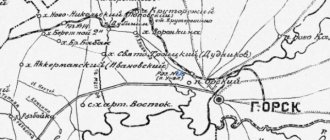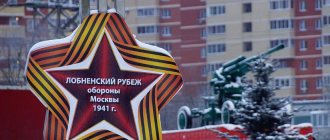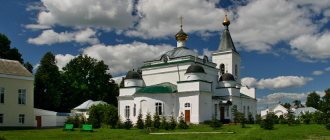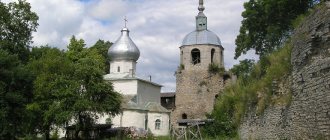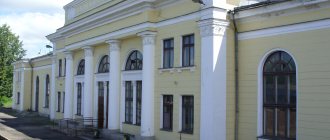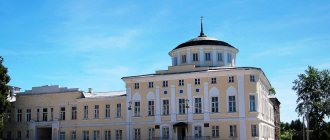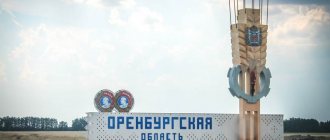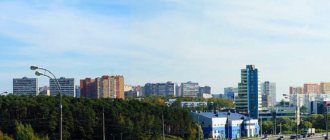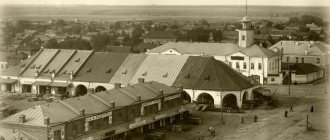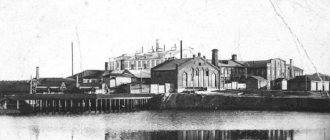Gai, Orenburg region, is a small town in the Russian Federation, with an area of 62 square meters. km. The discovery of copper pyrite ores served as the reason for the founding of the settlement. The population of Gaya as of 2021 is 35,255. The city is located next to the Iriklinsky reservoir. The telephone code of the city of Gaya is 53362, postal code is 462630.
From origins to today
According to one version, the name comes from a birch grove that grows near a healing spring within 6 km from the village. In the Orenburg area there is an abundance of plantings that were planted by pioneers from Belarus and Ukraine. Settlers have been developing the territory here since the 18th century. The word "gai" is of Belarusian origin, meaning grove.
But a more plausible version of the name's origin is part of the history of the Civil War. One of the heroes of military operations, G.D. Gai, who participated in the suppression of the Orenburg Cossack rebels in 1937, was repressed. After his restoration, the party published many works about the hero’s life. Since then, the city received this name, and one of the main streets in Orenburg is named after Guy.
On the territory of the modern city there used to be a mining and processing enterprise , and in 1959 a village began to form here. Thanks to the hard work of the plant workers, it was possible to set records - about 5 tons of ore were mined in a year. The authorities announced the construction of the plant and mining village as an All-Union shock construction project. The number of jobs grew, schools, residential buildings, kindergartens, and public baths needed to be built.
Since 1979, the settlement has become a city of regional subordination. In 1999, the coat of arms of Guy was established. Now there is a medical school, 10 educational schools, and a department of the Bashkir Legal College. Children have the opportunity to attend sections in sports and art educational institutions.
Guy
(Orenburg region)
OKATO code:
53413
Founded:
1959
Urban settlement since:
1965
City since:
1979 City of regional subordination
Center:
Gaisky district
Telephone code (reference phone)
| 35362***** | 210-99 |
Deviation from Moscow time, hours:
2
Geographic latitude:
51°28′
Geographic longitude:
58°27′
Altitude above sea level, meters:
380 Sunrise and sunset times in the city of Gai
City symbols
Guy has its own special symbols - a coat of arms and a flag. The coat of arms depicts a hammer, and on top of it is a butt. Everything is done on a red background. Below is a silver copper smelting furnace in the form of a building combined with a chimney on the left. Below is the slogan “Remember the past, believe in the future!” The inscription, made in silver paint, is on a red ribbon around the main design. The coat of arms was issued in honor of the anniversary, when residents celebrated the 40th anniversary of the city.
The entire composition was developed by a Moscow company at the request of the city administration, and it was finally approved by the council of deputies on April 13, 1999. The drawing was submitted to the State Heraldry under the President of the Russian Federation for expert evaluation, after which it was included in the State Heraldic Register of the Russian Federation.
The flag is represented by a rectangular canvas, divided into 2 parts (white and blue). There is a green stripe on the bottom edge. In the center is a rock with a black eagle. Above the green stripe on a blue background is the rising sun. The symbolism of the drawing denotes the historical and geographical features of the area.
The black eagle is part of the Orsk coat of arms. It is a symbol of a person's ability to endure difficulties and strive forward. The sun symbolizes light and knowledge. The green stripe indicates the fertility of agricultural land. White color - perfection and wisdom, blue - sublime aspirations.
In Dahl's dictionary
south Thumb. oak forest, grove, black forest; small detached deciduous, non-coniferous forest, especially in low-lying areas, in meadows; island, detachable, clean forest in bush thickets; thief. chickens floodplain forest, bush (dry black forest: ramenye); sometimes the forest has already been destroyed, and only the name of the forest remains, and stokers or a hummock with gullies, inconvenient for mowing; | chickens Donsk. a separate reed swamp, floodplain or bushy hummock. | Psk. rubbish in grain bread, tail, hunting with rapeseed and ear coverings. Gay bread, weedy, unfrozen. Gaek will belittle. an area of flat, homogeneous forest among others, e.g. lime forest among birch trees, as happens after felling or felling. Gay, related to gay. Gayevschik m. forest worker, watchman in the forest. Gaevnik m. kind of hawk? The falconers call a falcon that has been enticed into the hayvoron or into the rabble. Guyvoron, rook, Corvus frugilegus. Gayvoronye Wed. collect Same. Instead of hay crow, crow, mob, talk. and just a guy, i.e. a flock of crows, rooks, jackdaws adv. Hazel (adj.) nest. Gaya Ryaz. flock, string of birds. Gainak, plant Listera ovata, Bernets-rechuoy, Rozuline-tear; | plant Neottia nidus avis, nursery-grass. Gayno, gainishche or ganishche, goino cf. beast's nest; Sib. Vologda squirrel's nest, fox's den, marten's, etc. | Astrich. boar's den in the reeds; the same den of a beaver and a tiger in the reeds of the Aral Sea; | Sib. barn, esp. pork, dirty, dung coal in the barn; bedding for pigs. | Novg. Vologda hailo, hailo, mouth, pharynx, wide throat, pharynx. | Arch. pronunciation also Guyno, hut vezha, temporary shelter; or a kind of pain on karbas, from bad weather. GAI m. south. scream, din, noise, roar; | interjection shouting at cattle being driven. To nut or nut, nut, shout hai-gai, drive, drive; | Thumb. chickens novg. perm. scream, yell or make noise; whoop, bark, shout someone, call, click; call out to each other in the forest, vyat. gag. Gai-gai south. ah-ah, ah, interjection. amazement, reproach. Nut cf. hooting, screaming, calling; | noise, noise, scream. Call out, call out to each other. Gaikala Gaila vol. vociferous screamer, screaming, yawning, about the call, the hooting of Guylo cf. Ryaz. Guylo Vologda wide throat, jaws, hailo, 'What are you staring at, hailo, let loose? Why are you yelling? Gaichit arch. hail or ask what an oncoming ship at sea is talking about.
Economic condition
The main branch of the city's economy is metallurgy, but other enterprises operate here, and private business is developing. The retail network is represented by shops and retail spaces, pavilions. Main industrial enterprises:
- OJSC "Gaisky Mining and Processing Plant";
- NGO "Gaisky Non-Ferrous Metals Processing Plant";
- SEC "Gayskaya Poultry Farm";
- LLC Gaisky plant of mine rescue equipment "OZON";
- CJSC "RIFAR".
All telephone data of organizations and companies are in the directory. Since 2014, according to a government decree, Gai has been included in the number of cities where there is a risk of environmental deterioration.
Attractions
Memorial plaque to Hero of the Soviet Union Nikolai Ivanovich Rudenko
Orenburg region, Novokievka village, 10a
The original location is the village of Novokievka, a children's educational complex. Opening date: May 9, 2000. Later, in 2015, after the school was closed, the plaque was moved to a stele in memory of fellow warriors who died for their Motherland. Description of the memorial place: memorial plaque with an inscription.
Memorial plaque dedicated to the memory of Vasily Petrovich Voichenko
Orenburg region, Gai, st. Voichenko, 6
Established on May 8, 1980 in honor of a fellow countryman, a native of the village. Kalinovka of Vasily Petrovich Voichenko, who died in Poland in 1944. The plaque is installed on a house located on the street named after V.P. Voichenko. The inscription “The street is named after the national hero of Poland Vasily Petrovich” is engraved on the marble memorial plaque.
Historical and cultural sites
The sights of Gaya, Orenburg region, are of a religious nature and are of great importance to local residents. You can visit the Cathedral of John of Kronstadt, an Orthodox church built in 2002. It is located at: Orskaya street, 133.
Naturally, how can a city exist without the main monument? A statue dedicated to the founders of the city - the miners. According to the design of the artist N. G. Pepin, the Miner monument was erected in 1970. The following places have cultural and historical value:
- a local history museum, which contains samples of local flora and fauna;
- showroom;
- modern sports complex;
- Palace of Culture of Miners;
- cinema;
- children's creative center "Rainbow".
The Church of Peter and Paul in the city of Gai was founded in 1993. 5 years later, a bell tower and a church store were built. In 2009, a religious procession took place to the village of Kherson, where a similar structure is located.
Routes on the map of Gaya. Transport infrastructure
On the available maps of the city and detailed information posted on the website of the City Administration, you can see how easier it is to arrive.
The city has a railway station (the intersection of Voichenko Street and Orskoe Highway) on a line connecting it with Orenburg, Orsk, Novotroitsky, Mednogorsk, Novoorsk.
There are bus routes along the highway to many cities in the Orenburg region.
City trips are served by shuttle buses and taxis. The map of Gaya with houses contains information about current urban transport routes.
Features of the city
The weather in Gaya is not particularly mild and warm. The continental climate is characterized by cold and snowy winters and short, warm summers. The peak of cold weather occurs in January, with temperatures hovering around -17 0C. In July the maximum is 21 0C. From time to time, precipitation falls here (rain or snow), on average up to 300 mm per year.
The Gai sanatorium operates 6 km from the city. This is a balneo-mud resort where mineral water and natural mud of the lake are used. Also not far from the city you can undergo health treatments at a hydropathic clinic.
Using the Yandex. On the map you can easily see street names and exact house numbers. You can also see the location of the city on a map of Russia.
Statistics show a downward trend in population. Today, Gai ranks 452nd among 1,113 cities in the Russian Federation in terms of population.
Most of the real estate belongs to the city housing stock. All houses are equipped with central heating and gas. There is running water, sewerage, hot water supply. The head of the Gai urban district every year takes care of paying subsidies for housing and utilities, as well as supporting the population through social protection authorities.
All things to do in Gaya
If you have not yet decided where to go and what to do in Gaya, our site will help you figure out how to interestingly and usefully spend your time or relax. Here are the addresses and contacts of popular entertainment in Guy. All information is presented in specialized sections that allow you to quickly find both inexpensive entertainment and choose unusual and even extreme adventures.
Memorial to the participants of the Great Patriotic War
Orenburg region, Narbulatovo village, st. Shkolnaya, 5a
Opened on May 9, 2010. The obelisk is located on the school grounds. The author is a resident of Gai Sergei Boleslavovich Kiko. The total height of the obelisk is 2.2 m. The size of the base is: length – 2.1 m, width – 0.9 m, height – 0.5 m. The base is rectangular in shape, lined with beige tiles. The plates are located at the top.
Orenburg region
The city of Gai owes its existence to a unique deposit of copper ore. Even before the revolution, the place where it is now located was famous for its healing properties. There are many legends about the healing properties of Vitriol Lake and the emergence of the birch grove.
The history of the city and the Gaisky mining and processing plant began in 1932 with survey work that began on the initiative of Joseph Leontyevich Rudnitsky, the oldest geologist in the Orenburg region. The war interrupted this work.
And only in 1950, in the same place where the first well was once drilled, they came across an ore body. In March 1951, a second deposit was discovered - a thick layer of copper pyrite. Further searches showed that in the vicinity of the village. Kalinovka land contains in its depths a rich deposit of copper ore. The copper content in the ore here turned out to be 4-5 times higher than in that which was mined in the old Ural mines.
In those days, the country learned the names of the discoverers of the copper treasure. For the discovery and exploration of the deposit, geologists M.S. Nedozhogin, V.I. Skripil, V.I. Lennykh, N.A. Sibirskaya and I.L. Rudnitsky were awarded the title of Lenin Prize laureates.
The discovery of a mineral deposit was the basis for the construction of the country's largest mining and processing plant for non-ferrous metallurgy. In March 1959, the Council of Ministers of the RSFSR adopted a resolution on the construction of the Gaisky mining and processing plant. The construction site was declared the All-Union Shock Komsomol, which was attended by young people from all over the Soviet Union. On May 8, a train with a large group of volunteers arrived in Orsk, and the next day, May 9, a rally was held at which the construction flag was raised. This date became the official birthday of the city.
The city received its name from the popular name of the birch grove that frames the healing spring not far from the city (gai in Ukrainian - forest, grove).
Guy grew rapidly. Already three months after the start of construction, industrial current from the Iriklinskaya hydroelectric power station arrived at the construction site via a newly laid power line. In honor of this victory, a red star was lit on the roof of the builders' club. This was invented by the Komsomol headquarters, led by former sergeant major of the Soviet Army Viktor Polyanichko. By August 1959, 4,500 people lived in Gaya. Difficulties strengthened the perseverance of the builders and their desire for success. And victories were won one after another. A month later, the second star lit up - the builders finished laying the railway line to Gai from the Krutorozhino station. Then a new victory - the first million cubic meters of rock were removed from the quarry. And a few weeks later, Ural water flowed into the construction site through a pipeline.
On July 14, 1959, the construction of the Irikla-Gai power line was completed. By autumn, many residents of the tent city moved into good-quality houses with all amenities. It was not easy - after all, almost five thousand people had to be resettled at once. The first school in Gai with 280 places and a kindergarten with 60 places was put into operation. And another star flashed in the Gai sky.
On July 1, 1960, the first trial smelting of Gai ore was carried out at the Mednogorsk copper-sulfur plant and the first Gai copper was obtained. In February 1961, the first stage of the underground mine was launched. The plant became part of the operating enterprises. Gai ore systematically began to arrive at the copper smelters of the Urals. In November 1962, the second stage of the underground mine came into operation, and another 30 thousand square meters were built. m. of housing.
In the year of its 20th anniversary, in 1979, the working village of Gai received the status of a city of regional subordination. It was registered in the register of cities of the Russian Federation as No. 1000. In 1999, the city’s coat of arms was approved. After the start of construction of the Gai mining and processing plant and the city of Gai, on the basis of the Decree of the Presidium of the Supreme Soviet of the RSFSR dated November 3, 1960, the district center was moved from the village of Khalilovo to the working village of Gai, and the district was renamed Gaisky.
On June 1, 2015, the Gaisky district as a municipal entity ceased to exist, and all its settlements became part of the Gai urban district.
The city-forming enterprise is PJSC Gaisky Mining and Processing Plant - the largest mining enterprise in the Urals and the main ore base of non-ferrous metallurgy of the Ural Mining and Metallurgical Company. Currently, Gaisky GOK PJSC mines copper, copper-zinc and sulfur ores. The main part goes to the processing plant. The resulting concentrates and part of the ore are sent to Russian processing plants, and part is exported. The plant's products - non-ferrous metals copper and zinc in concentrates - are the main type of production in the city. The volume of its production in the municipality is 73.2%.
Industrial production is represented by metallurgy enterprises LLC Gaisky plant for processing non-ferrous metals and CJSC RIFAR, food industry enterprises - LLC and MUP "ORT", publishing and printing activities - State Unitary Enterprise Publishing House "Gaiskaya Nov", other production - LLC GZSO " OZONE”, the production and distribution of thermal energy and water is carried out by OJSC Gaisky GOK and the Municipal Unitary Enterprise Housing and Communal Services of the city of Gai.
In Gaya there are 8 secondary schools, an evening shift school and a special correctional school, with 4,346 students. The city also has vocational and medical schools, an evening industrial college, and a branch of the Bashkir Economic and Legal College.
Two children's sports schools, an art school and a children's art school have been opened. 3,927 children (over 90 percent of all schoolchildren) study in them, as well as in clubs, sections and studios in various areas. There is a city exhibition hall, a city local history museum, a Miners' Palace of Culture, a sports complex, the Raduga Children's Creativity Center, and the Ostrovok Center for Social Rehabilitation of Minors.
Source :
Sonorous name - Guy: decree. lit. / T.L. Krylova; Orenb. region fuck them. N.K. Krupskaya, Gaiskaya Central District Hospital, comp. T.L. Krylova, ed. V.V. Ronges, N.N. Fakeeva. - Guy, 1982. - 19 p.
Bibliography:
1. Altov, V. G. Cities of the Orenburg region. - Chelyabinsk, South Ural Prince. Publishing house, 1974. - P.242-253. 2. Balakov, V.M. Gaisky gems: Gaisky GOK and the city of Gai are 40 years old: Forty portrait interviews / V.M. Balakov. — Perm: Gais. Nov, 1999. - 175 p. : ill. 3. Balakov, V. M. Copper ore Gai - the pearl of the Urals / V. M. Balakov. - Perm: Zvezda, 2005. - 176 p. : photo 4. Burlak, B.S. Gaian constellation / B.S. Burlak, V.P. Polyanichko, A.I. Zhilenkov. - Chelyabinsk: South Ural Book Publishing House, 1984. - 153 p. 5. Gaisky mining and processing plant. 50 years / auto-comp. L.S. Skorlupkina. - Orenburg: Dimur, 2009. - 532 p. : ill. 6. Gaisky (Khalilovsky) district. 75 years old. 1934-2009. - Gai: Gaiskaya Nov, 2009. - 15 p. : photo 7. Dmitriev, V. T. Bolshoy Gai: [construction will enrich the mine. plant]: notes of a journalist / V.T. Dmitriev. - Orenburg, 1960. - 60 p. : ill. 8. Dmitruk, K.P. I am writing from Guy: pages from the diary / K.P. Dmitruk. - Orenburg, 1961. - 52 p. : ill. 9. The sonorous name Guy: bibliogr. decree: issue. 2 / Orenb. region univers. scientific fuck them. N.K. Krupskaya, bibliogr. department, Gayskaya center. area. b-ka; comp. V.V. Yulusova, E.V. Trushina, L.V. Golysheva, ed. E.V. Trushina. - Guy, 2005. - 100 p. 10. And a city grew up in the steppe / V. Balakov, V. Lobanov. - M.: Poster, 1984. - 31 p. 11. Konobevtsev, N. G. Know and be proud / N. Konobevtsev. - Orenburg: Dimur, 2004. - 260 p. :il. 12. Netbaeva, D. A. Komsomol construction projects in the Orenburg region as a factor in the emergence and development of workers’ settlements / D. A. Netbaeva // “My land, my pride”: materials of the region. scientific-practical conf. / Ministry of Culture, Societies. and external relations Orenb. region, Orenb. region local historian museum. - Orenburg, 2009. - pp. 62-65. 13. Ostrovsky, A.L. Happy birthday, city of Gai!: essays / A.L. Ostrovsky. — M.: Mol. Guard, 1961. - 76 p. : ill. 14. Pechin, V.F. Mining horizons / V.F. Pechin, V.S. Lobanov, V.M. Balakov. - M.: Nedra, 1985. - 77 p. : ill. 15. Ukhanov, I. S. Flowers and bullets for Victor Polyanichko / I. Ukhanov. — Moscow: Golos-Press, 2021. — 154 p. 16. I’m talking to you, my Guy / ch. ed. V.M. Balakov. - Orenburg: Dimur, 1999. - 228 p. 17. Karamurzina, M. Plast of modernization / M. Karamurzina // Russian newspaper. — 2015. — December 4. — P. 18: photo. 18. Karamurzina, M. So that you have enough health for the whole year / M. Karamurzina // Orenburg region. — 2012. — June 25. - P. 5. 19. Yarygin, V. B. In the first thousand / V. B. Yarygin // Orenburg region. - 2004. - May 5. — P. 2. 20. History of the city of Gaya [Electronic resource]. — Access mode: https://pororo.ucoz.ru/publ/stati_ob_urale/istorija_goroda_gaja/1-1-0-14. — Cap. from the screen.
